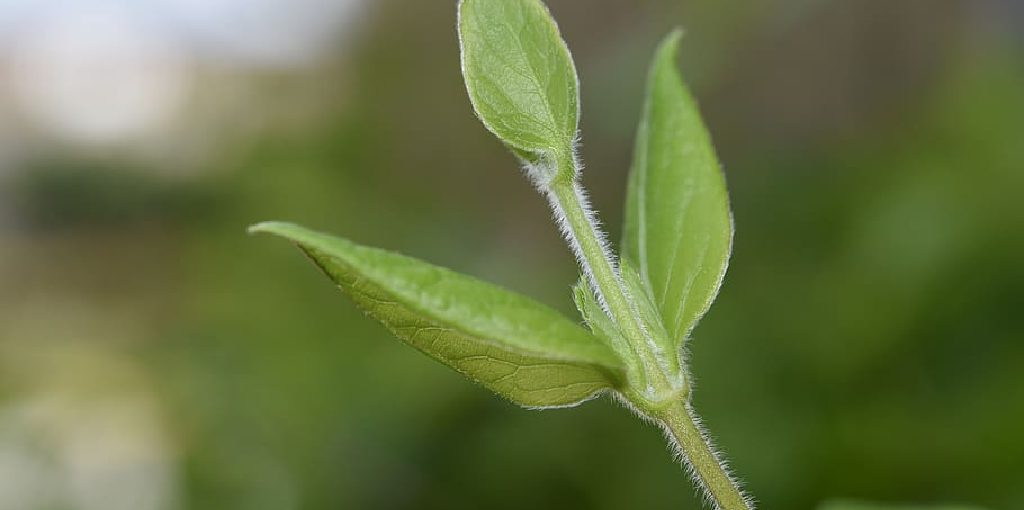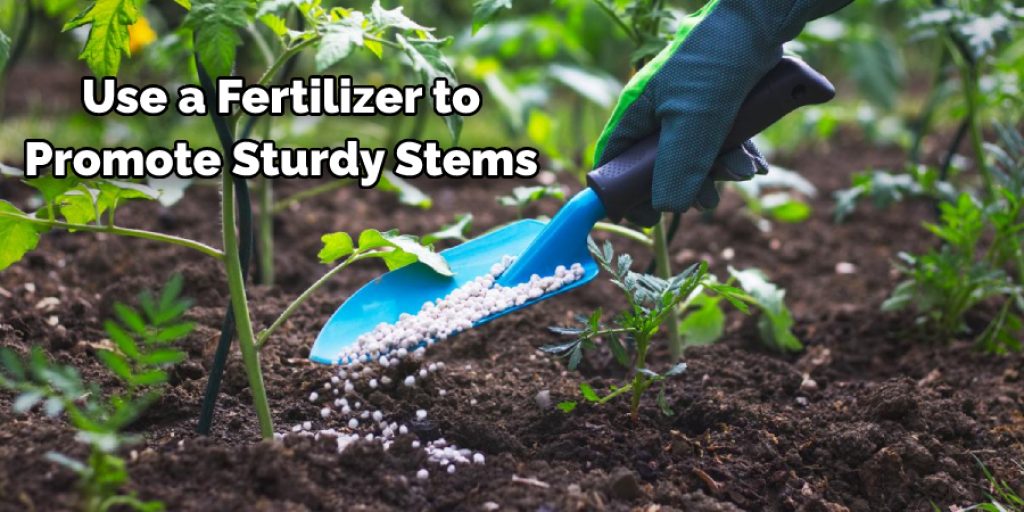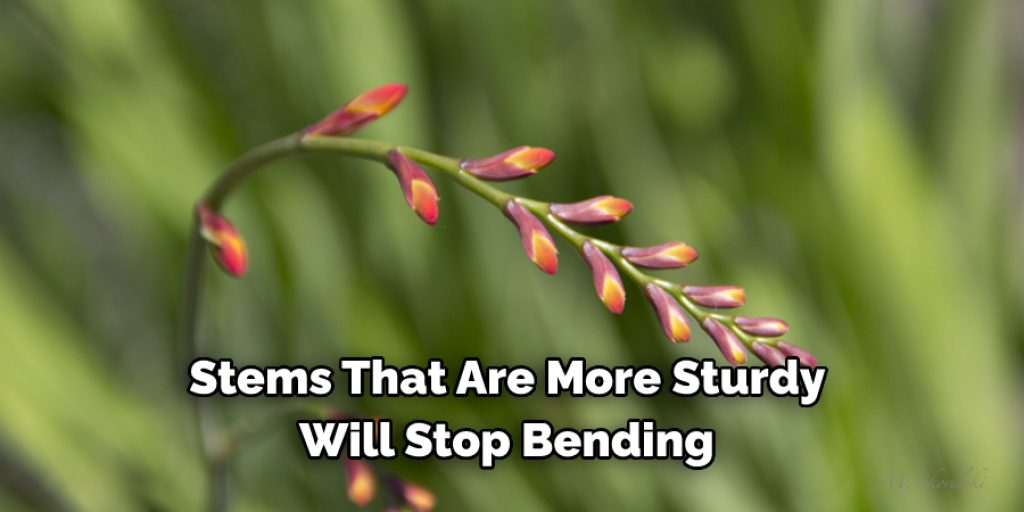How to Strengthen Plant Stems
A plant stem is a complex structure composed of tissues and organs, including the vascular tissue, pith, xylem, phloem, and cortex. The primary functions of the stem are to provide support for the plant and its fruit or seedpods; store food; transport water from roots to leaves; produce flowers; absorb energy from sunlight to carry out photosynthesis.
There are many different ways to strengthen a plant’s stem, from using natural remedies to hand water it or through more extreme methods such as grafting onto another more robust plant’s rootstock or caging to protect it from harsh weather conditions. This blog post will discuss some common methods on how to strengthen plant stems and provide information on when each method should be used.

Eight Reasons Why Plant Stems Get Weak:
1. Not enough sunlight/insufficient photosynthesis occurs
2. A plant has lost its lower leaves and no longer receives the energy it needs to carry out photosynthesis
3. The roots of a plant are weak and do not supply nutrients efficiently (this could be due to over-watering, shallow planting, over-fertilization, drainage problems, or root diseases)
4. A plant has been transplanting into a container that is too small for it
5. A plant has not formed enough secondary branches or leaves to support it
6. The weather has become too hot and dry, and the plant is weakened due to a lack of water.
7. A plant that flowers closes off its main stem to build up energy for seed production and fruit development.
8. Root damage interrupts the flow of necessary nutrients from roots throughout the plant.
12 Methods on How to Strengthen Plant Stems:

1. Add Support:
If your plant stem is too weak to hold the weight of the plant, you can make a support for it by using string or wire. Weave it through the leaves and wrap it around your plant several times. If you have a large enough branch growing out from your main stem, you can also use that. Decide what will work best for your plant. If your plant stem is too weak to hold the weight of the plant, you can make a support for it by using string or wire. Weave it through the leaves and wrap it around your plant several times.
2. Wrap With String or Wire:
Tie a piece of twine around the mid-point of your stem, wrap it down to the base, and tie it again to make sure it stays secure throughout its life span. Your stem will likely grow at least a little bit longer during its life, so if you’ve already tied it to the base, once the top grows out more, you can continue tying it closer to the end of your stem. Place the stem in a glass jar or vase with plenty of water, and change the water every few days. You can also add a little bit of plant food to help keep it healthy and growing well.
3. Put Weight on Them:
If you have two stems sticking straight up from your plant, you can tie them around your main stem once they are tall enough. Then, as they grow, the weight of the branches themselves will strengthen your plant’s overall structure. If you tie your stems too tightly, however, they can grow misshapen. Alternatively, if you don’t tie them tight enough, the plant may not produce a strong main stem. Experiment with different tying techniques to find what works best for your plants.
4. Remove Excess Leaves:
If you have too many leaves collected in one place, cutting off that section of the leafy stem may help strengthen the whole plant by removing some of the weight. However, do not remove too many leaves, or your plant stem may not be able to support the rest of them.
5. Use a Trellis:
If you have a climbing plant that needs support, you can add a trellis, which is simply a structure to climb on that can be made from wood, wire mesh, or other materials. By attaching a trellis to a wall or fence, you can help train your plant the way you want it to grow from an early age. Some plants are known for their tendency to climb walls, such as ivy. If you want to grow plants like this, then you need to make sure that you have a support system in place for them.
6. Tilt Them Toward the Light:
If your stems are too weak to lean against something and still get enough light, try tilting them towards a window or other source of sunlight. You can prop them up against a wall, lean them vertically next to another plant, or prop them on top of a water bottle for an hour after you water your plant. That should give it enough time to start draining before the weight makes the stem too weak.
7. Add Weights:
If your stems are still much too weak to support themselves, you can tie small weights to the bottom of them. Just be sure not to put so many on that the weight is more significant than your plant stem’s strength. Signs that your plant stems are too weak to support themselves. If the plant leaves are drooping, and the plant itself seems to be tilting to one side or the other, you can tell that the stems are too weak to support the plant.
8. Support With Another Plant:
If your plant has extremely limp stems but it is still alive and healthy, it may be able to support itself if you stick another plant under it. If the lower leaves are large enough, leave them there and just attach your limp stem directly to the middle of them.
You can also use this method for smaller plants with branches coming off the sides or bottom. Again, look for one that is healthy next time you buy a plant so you know you are getting one that will stay alive if the top part dies.
9. Plant in a Shallow Dish or Tray:
Fill a dish, tray, or pot with pebbles and add enough water to keep them moist. Then, let your plant rest on top of the pebbles, so its stem is submerged in the water.
Be sure to remove as much of the leaves as possible from under the water and not rot and cause bacteria to grow. This method is beneficial for plants with long, slender stems that can easily weigh down their weight.
10. Use a Plant Stake:
A plant stake is a wooden or metal pole with a pointed end that you can stick in the ground around your plant to help hold it upright. You might need to attach ties or string to something else, too, for extra support if it’s not holding up well on its own.
11. Plant On the Solid Ground:
If your plant is in a pot, you can often just plant it in the ground. The weight of the soil will help support its structure, even if it isn’t very strong. Just make sure you place it somewhere with enough sun for healthy growth. You can also use this method by putting small plants in large pots to stop them from falling over.
12. Prune It:
If one of your stems is especially limp, you can trim little bits of it off to help strengthen the others that are intact. Just be sure you don’t cut too much off or damage the stem. This works especially well for plants with multiple blossoms coming from one stem-like hibiscus, snapdragons, and roses.
Some Tips and Suggestions:

As you have known how to strengthen plant stems, here are some suggestions to get you started:
1. Regularly cut off dead or dying leaves and branches to encourage new growth and prevent pests and diseases from infecting the plant.
2. Remove all soil after winter so young plants can re-establish their roots before next summer.
3. Use a fertilizer rich in phosphate, potassium, and nitrogen to promote sturdy stems.
4. Fertilize new growth to encourage the development of additional, healthier branches.
5. Trim off any dead material before it falls to the ground and spreads disease through your garden area.
6. Prune back old growth by at least one-third to promote healthy new growth on mature plants.
7. Tie back branches that are too long to prevent them from breaking in the wind or under the weight of snow.
8. To further strengthen a plant’s stem, remove any leaves on the lower half of the branch to expose more of the trunk.
9. Remove branches growing at an angle. This weakens the plant because it forces several stems to support the foliage.
10. Prune back plants growing into other plants or buildings where branches are likely to cause damage.
5 Benefits of Stronger Plant Stems:

1. The plant will support more fruits/flowers, sometimes by a significant amount. This is often the case with tomatoes!
2. The stem may bear less leaves to make way for fruit or flowers, resulting in plants that look less messy and more aesthetically pleasing.
3. The stem will be much less likely to break in strong winds, which is very useful for plants exposed to outdoor elements (like an obelisk or tomato plant).
4. Stems that aren’t as flimsy can increase your harvest because you don’t have to pick individual fruits/flowers as often.
5. Stems that are more sturdy will stop bending over and bringing the rest of the plant with them, making harvesting much more accessible (especially for larger plants like sunflowers).
Do Fertilizers Make Strong Plant Stem?
Some fertilizers contain high levels of phosphorus which can promote cell division in plants. The older, lower leaves are often the first to be shed as new growth occurs at the upper parts of plants. Growth stimulants are chemicals that cause or boost plant growth by stimulating cellular processes, enzyme activity, and organ development.
Plants fed with growth stimulants do not produce more fruit or flowers, they simply grow faster. Therefore, they are very beneficial for plants in situations where few leaves and too much sunlight is present such as when the plant is young and needs to catch up with others.
However, they should be avoided in mature specimens because they will cause the older leaves to fall off, leaving them more susceptible to disease. If you want to know how to strengthen plant stems naturally then follow the methods mentioned in this blog post. This will help your plant stems to grow.
Frequently Asked Questions
Why Are My Plants Stems Weak?
There are a few reasons why your plants may have weak stems. One possibility is that the soil is not acidic enough. Make sure to add sulfur or lime to the soil every couple of months to help balance the pH levels and promote strong plant growth.
Another possibility is that the water you are using is not high quality. Try using rainwater, distilled water, or purified water instead of tap water to avoid introducing harmful chemicals and minerals into your plants’ environment.
Finally, make sure to fertilize your plants regularly with a balanced fertilizer designed for flowers and vegetables. Over-fertilizing can cause foliage problems such as yellowing leaves or stunted growth.
Why Is My Plant Stem Splitting?
There are a few reasons why your plant stem might be splitting. The most common reason is that the stem is too dry. You can help to solve this problem by watering your plants regularly and making sure that the soil is moist but not wet.
Another common cause of stem splitting is over-fertilization. Make sure to fertilize your plants only when the soil has reached a depth of 2 inches, and make sure to water thoroughly after fertilizing.
Finally, you can also try using a plant water softener if your soil is hard or contains lots of clay.
Can Plants Heal Themselves?
Yes, plants can heal themselves. In fact, they have a remarkable ability to regenerate damaged tissue. This is due to the presence of cells called plant cells that have the ability to replicate and form new tissues.
Plants use this ability to repair damage caused by environmental factors (such as sunlight, wind, and rain), a physical trauma (such as being hit by a car), or disease.
The process of plant healing begins with the release of chemicals called cytokines. Cytokines are molecules that play an important role in the immune system and are responsible for the body’s response to injury or infection.
These chemicals stimulate the growth of cells called fibroblasts. Fibroblasts are special cells that are responsible for repairing damaged tissue. Once these cells have been activated, they start to produce an extracellular matrix (ECM). ECM is a mixture of proteins, polysaccharides, and other substances that helps bind together collagen fibers and other proteins so that new tissue can be formed.
Do Plants Heal at Night?
Yes, plants do heal at night. They use the energy from the sun during the day to convert food into energy that they can use to grow and repair themselves. At night, plants use this energy to create new cells and restore damaged ones.
What Happens When Plant Tissue Is Damaged?
Plant tissue is sensitive to damage and can be damaged by a number of factors, including:
• Extreme weather conditions, such as high temperatures or humidity.
• Chemicals that are used in agriculture, such as pesticides and fertilizers.
• Damage from pests or diseases.
• Poor irrigation or drainage systems.
Is Baking Soda Good for Plants?
Baking soda is a natural product that can be used to clean surfaces and plants. It is also known as sodium bicarbonate. Baking soda can be used to clean surfaces such as countertops, windows, and floors. It can also be used to remove oil and grease from kitchen appliances.
It can also be used to clean plants by removing dirt, dust, and unwanted plant growth. Baking soda is effective at killing bacteria and fungus.
Conclusion:
In summary, you have to know how plants react in different environments and if they are being exposed to too much or not enough water. It is also essential that the soil is rich in nutrients so your plant can grow strong roots.
When a plant doesn’t receive adequate care, it will become weak and may die off prematurely. We hope this blog post helped give you some ideas on how to strengthen plant stems and keep them healthy!




